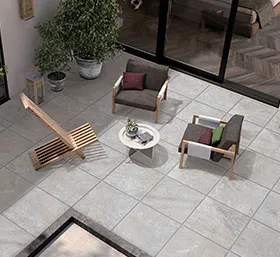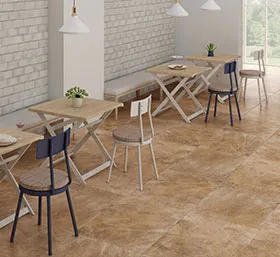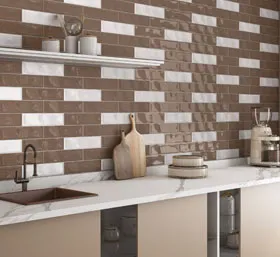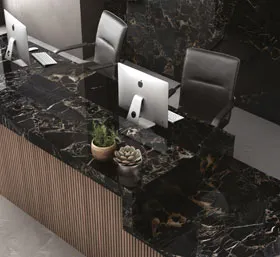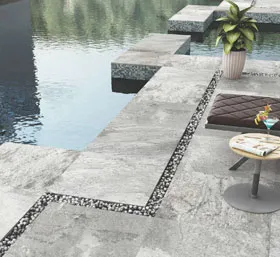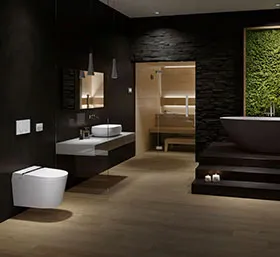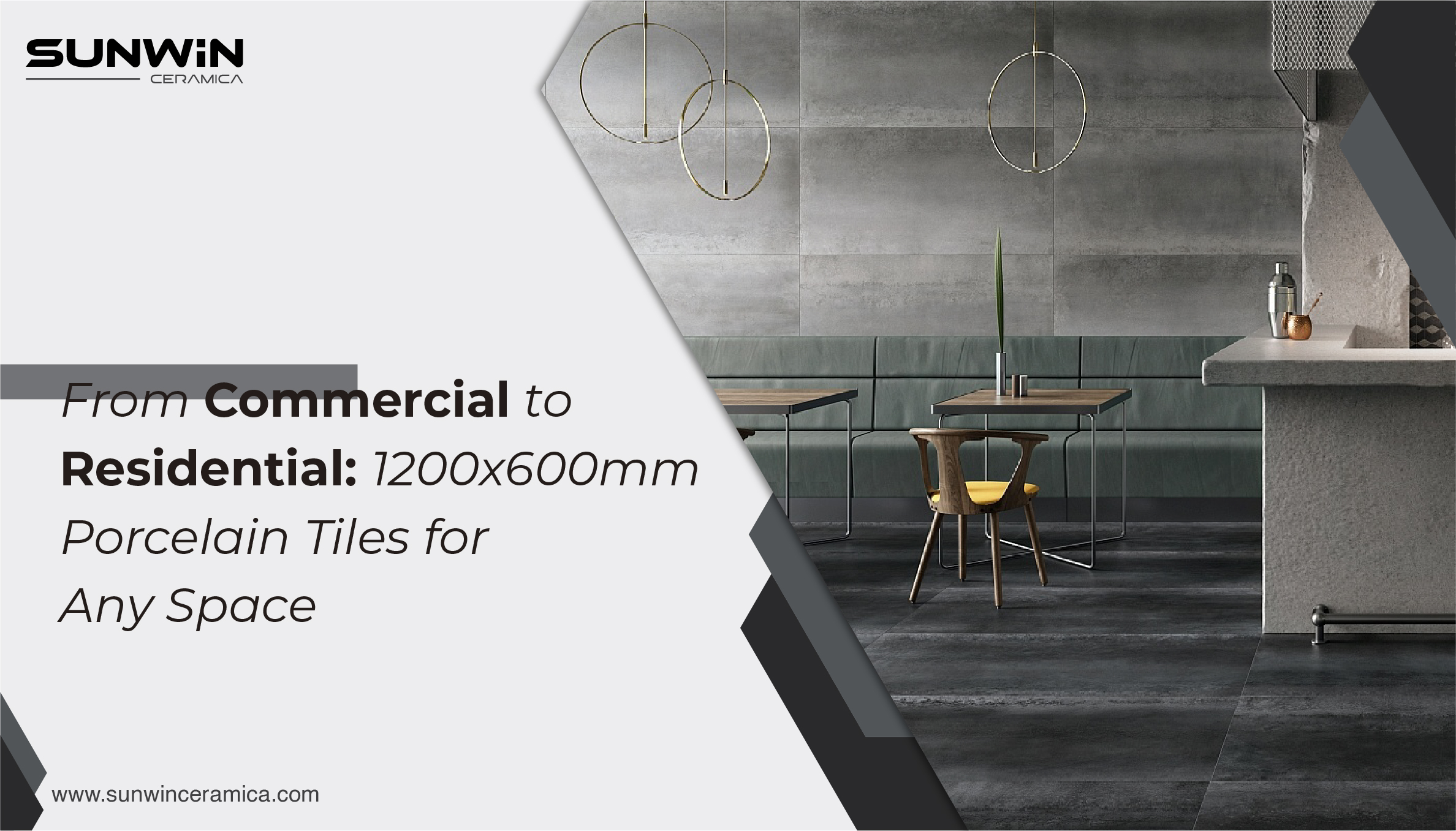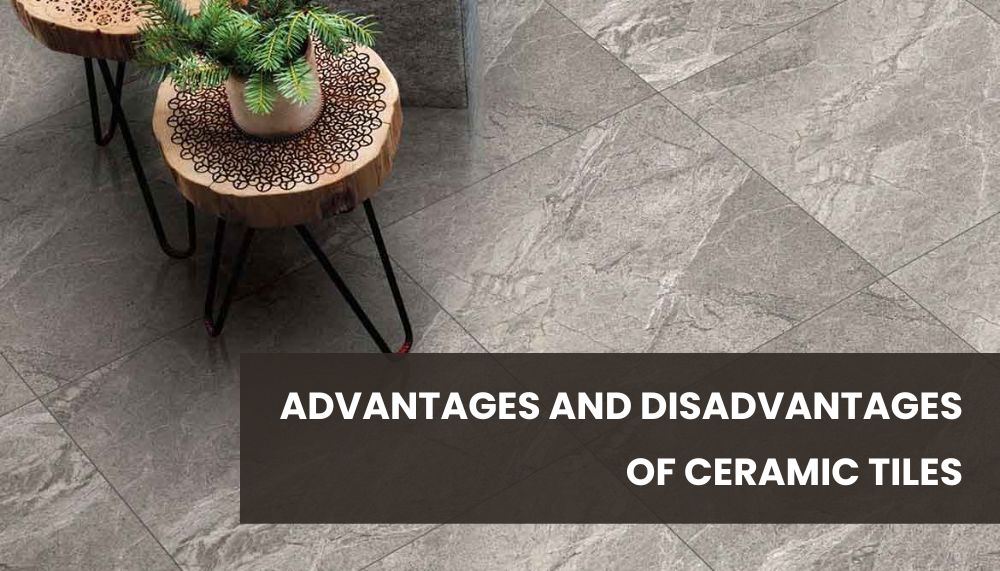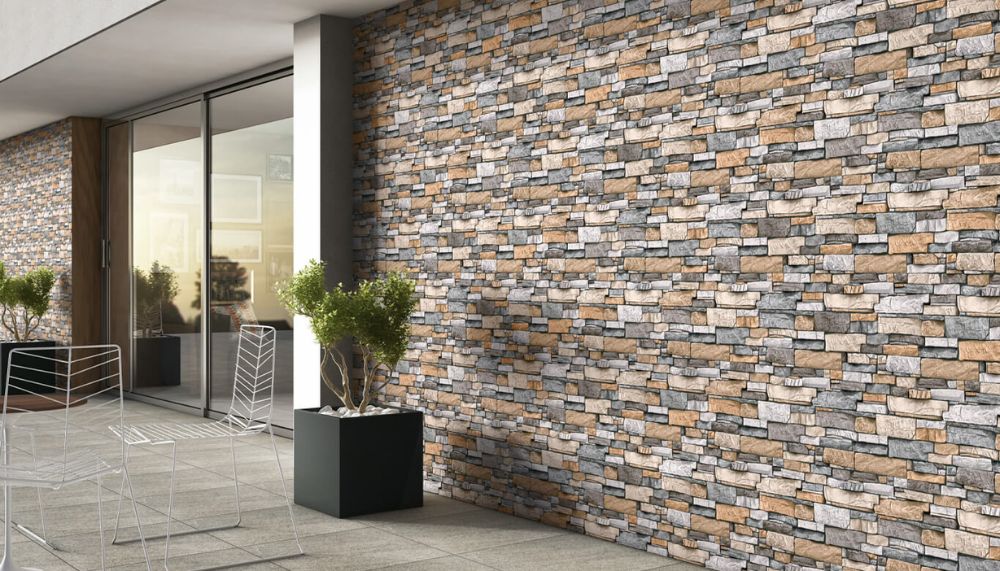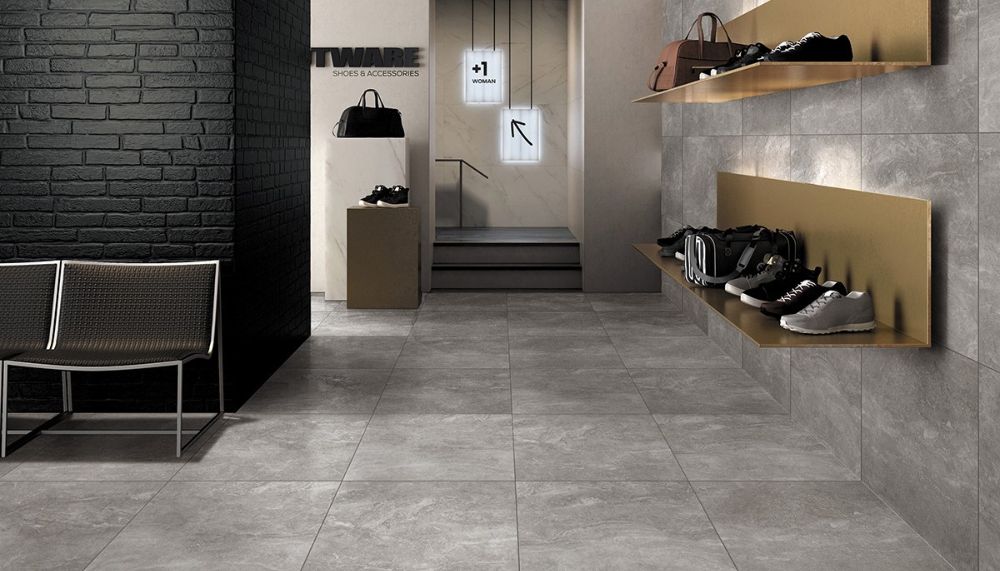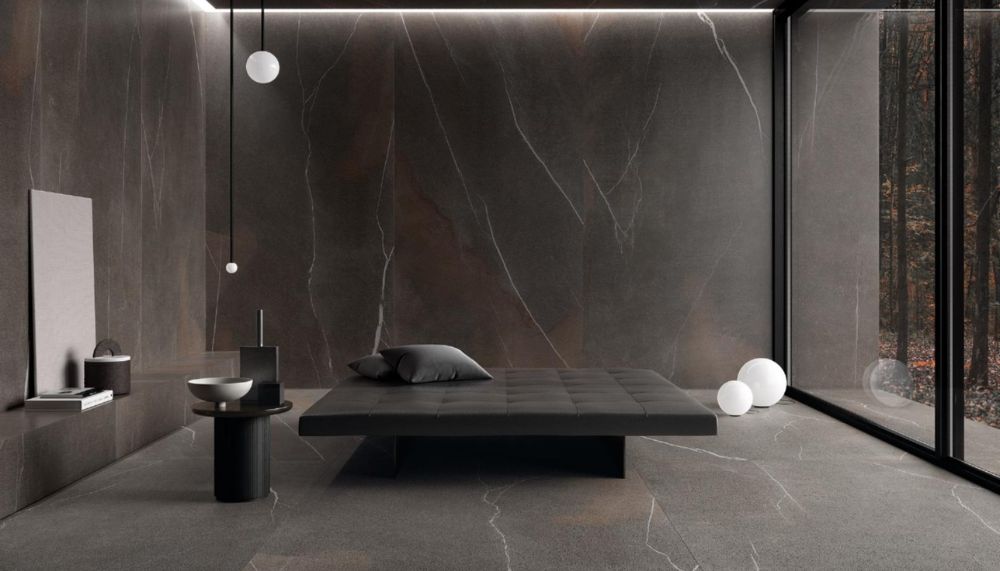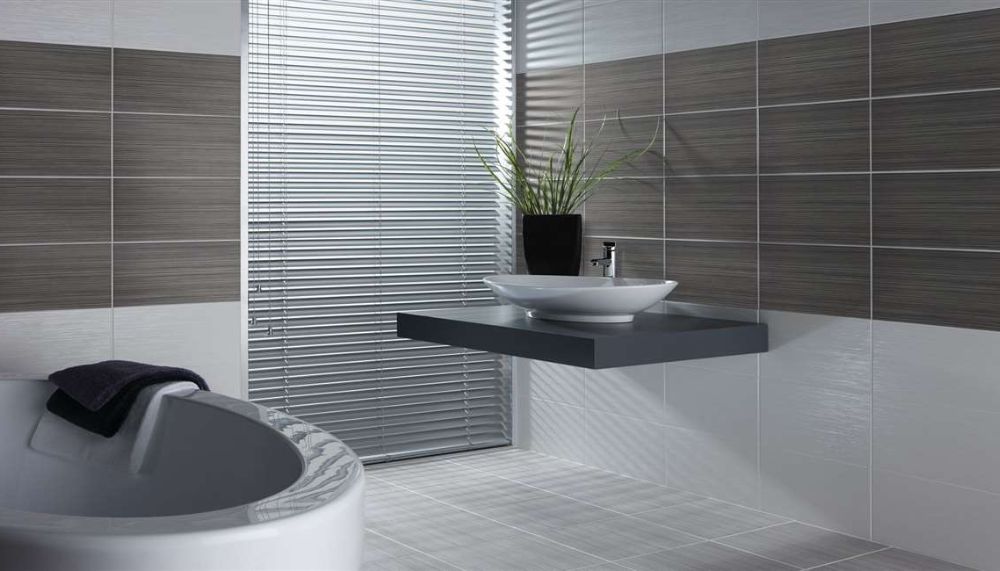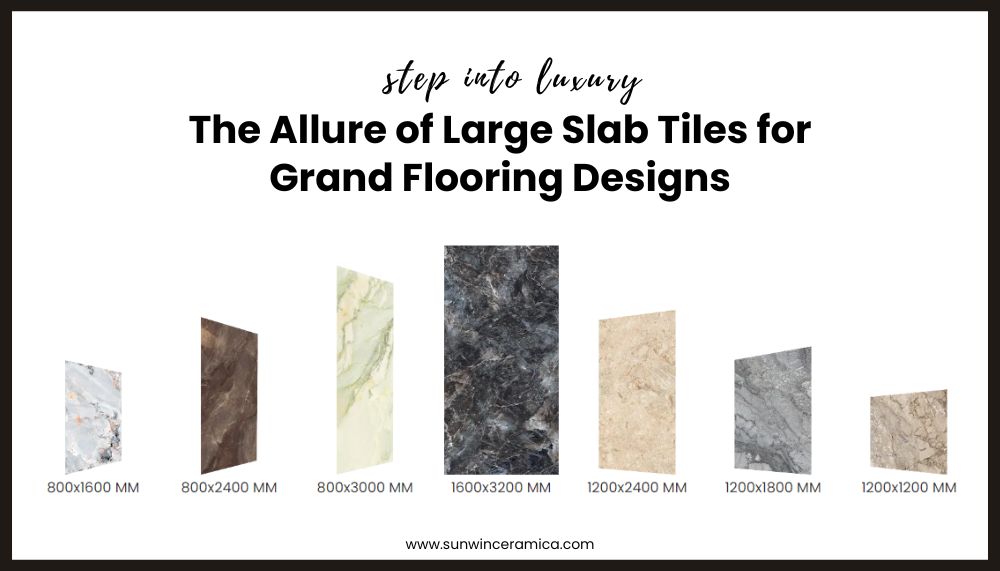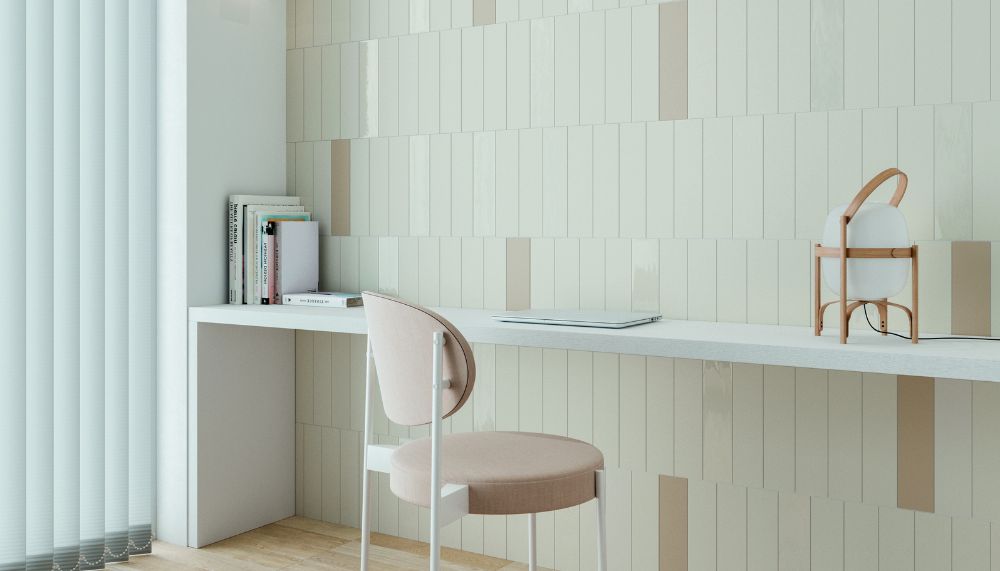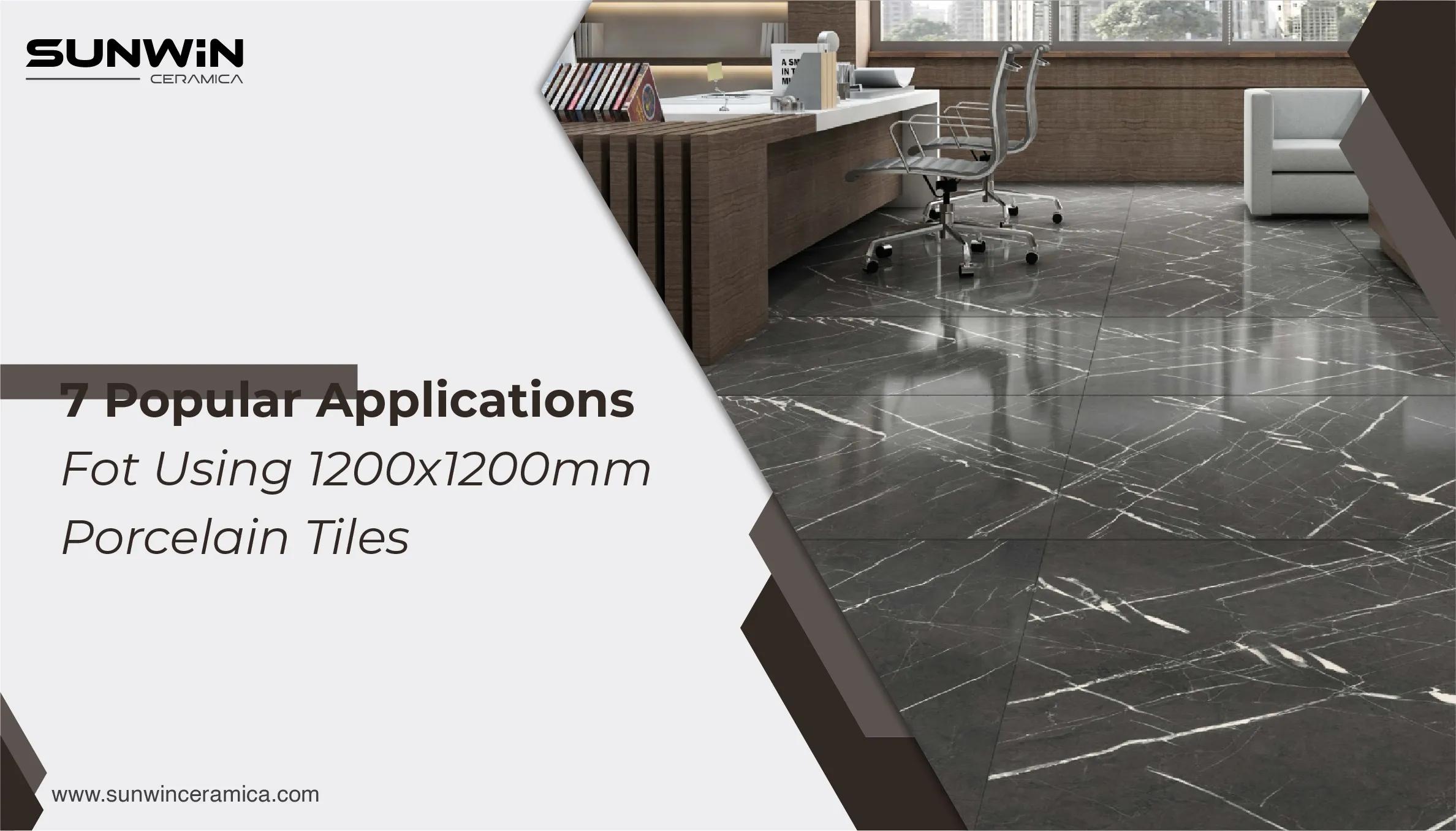
Porcelain tiles are popular for serving extraordinary design possibilities for different spaces. However, using a single layout tile can create a monotonous effect and boring appeal in the space. Therefore, according to several interior designers, homeowners should use a combination of small and large tiles for creating unique and eye-catching Interiors.
To get started with innovative ideas, we have brought you a series of themes that you implement using the combo of small and large tiles.
6 Unique Small and Large Porcelain Tile Combinations For Your Space
1. Subtle Borders and Accents
To produce a great-looking bordered effect, you may strategically combine smaller tiles, like 600x600mm or 800x800mm, with bigger tiles, like 1200x1200mm or 800x1200mm. Without overpowering the overall pattern, the smaller tiles can be arranged to the borders or edges of the larger tiles. In this way, you may employ smaller tiles to create a sublime and alluring design that provides a balanced appearance to the room's aesthetics.
2. Herringbone or Chevron Patterns
Do you love experimenting? The herringbone pattern is a must-try. You can combine smaller tiles like 600x600mm or 800x800mm within a backdrop of larger tiles to achieve this. Use large tiles of sizes 1200x1200mm or 800x1200mm for the perfect blend. You can go with clean patterns to add visual interest and movement to the design. It can create a dynamic focal point. Moreover, you can apply different styles of herringbone by alternating the direction of the smaller tiles. Try out this classic design with modern charm to get the desired aesthetic of the space.
3. Mixed Size Modular Patterns
Embrace creativity by mixing different sizes of tiles, including 600x600mm, 800x800mm, and 1200x1200mm, in a modular layout. Experiment with alternating rows, columns, or sections of tiles to create dynamic patterns and textures that break away from traditional uniformity. By playing with scale and proportion, you can achieve a visually striking design that adds depth and dimension to the space, transforming it into a unique expression of style and personality.
4. Gradually Transitions
Create seamless transitions between different tile sizes, starting with larger tiles like 1200x1200mm in the centre of the room and gradually shifting to smaller tiles like 600x600mm or 800x800mm towards the edges. This gradual progression of tile sizes creates a sense of movement and flow, visually expanding the space and enhancing the overall sense of openness. By carefully planning the transition points and considering the natural flow of light and traffic patterns, you can create a harmonious and inviting environment that feels cohesive and balanced.
5. Focal Wall
Elevate the design of your space by incorporating a combination of tile sizes, including 600x1200mm and 1000x1000mm, to create feature walls or focal points that command attention. Experiment with bold patterns, geometric shapes, or abstract designs to make a statement and add visual impact to the room. Whether used as an accent wall in a living room, a backsplash in a kitchen, or a decorative panel in a bathroom, these custom-designed features can become the centrepiece of the space.
6. Textured and Dimensional Effect
Introduce depth and dimension to your design by pairing tiles with different colours and finishes, such as 600x600mm or 800x800mm with smooth, glossy tiles sized 800x1200mm. The contrast between smooth and textured surfaces creates visual interest and tactile appeal, inviting touch and exploration. By incorporating tiles with varying degrees of reflectivity and sheen, you can play with light and shadow to create dynamic visual effects that enhance the ambience of the space.
Conclusion
So these are some ways you can incorporate two or more different porcelain tile sizes together into your space to get the unique and outstanding look. Be sure to select an option that complements your space and its layout.
